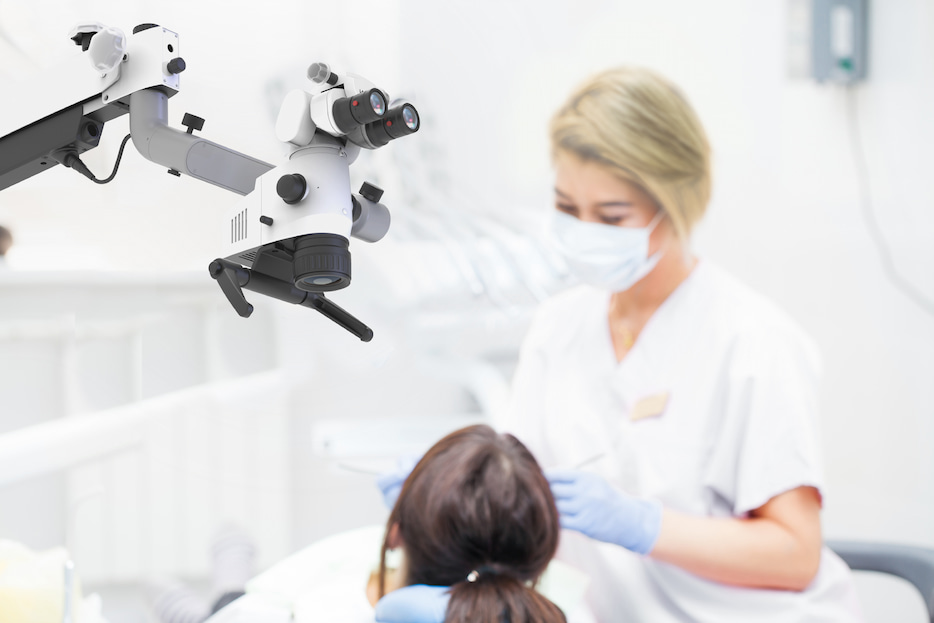The ROI math spelled out for microscope use by general dentists

Introduction
In dentistry, every investment comes with a big question: will it pay off? That's why equipment like the dental operating microscope is sometimes overlooked by general dentists. At first glance, the price tag looks steep. But when you actually run the numbers, the story changes. The ROI math spelled out for microscope use by general dentists shows that this tool is not just a luxury—it’s a profit-generating, patient-trusting, ergonomics-improving game changer.
The Advantages of Using a Dental Operating Microscope
One of the strongest arguments for adopting a microscope is the quality of care it enables. The benefits stretch far beyond magnification:
- Sharper visibility and precision – Detecting a crown margin, evaluating cracks, or refining root canals becomes dramatically easier.
- Better treatment outcomes – Restorative dentistry cases, from fillings to complex reconstructions, are executed with fewer complications.
- Improved ergonomics – Dentists can work upright, reducing long-term strain and injury. Many professionals cite fewer headaches, neck issues, and back pain after switching to operating microscopes.
Patients notice this level of precision, too. They trust a provider who can literally “show them what they see,” often with an intraoral camera attached to the microscope. The result? Increased case acceptance and long-term loyalty.
The ROI Math: Breaking Down the Numbers
Let’s spell out the ROI step by step.
The Cost Side
A high-quality dental operating microscope may cost between $15,000 and $30,000, depending on features, accessories, and brand. That initial cost can feel heavy—but compare it to other dental investments (like CAD/CAM machines or CBCT scanners) and it’s modest.
The Revenue Side
Here’s how microscopes contribute directly to revenue:
- Increased treatment acceptance
When patients see cracks, decay, or failing restorations magnified, they are far more likely to say yes to treatment. Even a modest 5–10% bump in case acceptance can equal thousands of dollars monthly. - Expanded services
Microscopes open the door to procedures many general dentists refer out: - Endodontics (complex root canals)
- Micro-restorative dentistry
- Early detection of fractures and decay
- Each kept procedure adds both immediate income and long-term trust.
- Time efficiency and longevity
Working more accurately means fewer redos, fewer chairside adjustments, and faster appointments. Efficiency is ROI.
The Numbers in Action
Let’s do some quick math:
- Average microscope investment: $20,000
- Added monthly production: $2,000–$4,000 (from increased case acceptance + retained procedures)
- Payoff period: 6–12 months
After that, it’s pure profit. Over five years, even on the low end, a microscope could generate $120,000–$200,000 in added revenue.
That’s the ROI math spelled out for microscope use by general dentists—clear, simple, and compelling.
Microscopic Dentistry: A Practical Guide to Integration
The financial benefits are real, but you’ll only see them if you integrate microscopes effectively into your dental practice.
Train the Team
Everyone—from hygienists to assistants—should understand the value of magnification in dentistry. A microscope doesn’t just serve the dentist; it enhances the patient journey across the practice.
Patient Education
Use the level of magnification to build trust. Showing patients their cracks, caries, or margins magnified removes doubt and drives case acceptance.
Everyday Use
Don’t save the microscope for special cases. Build it into daily workflows—exams, restorative dentistry, even hygiene checks. The more you use it, the faster the payoff.
Are Dental Microscopes Actually Worth It for the General Dentist?
This is the biggest question. Many still assume that microscopes are only for specialists like endodontists. The reality? General dentists stand to gain even more.
- Broader case retention – Every case you keep in-house instead of referring out boosts ROI.
- Competitive edge – Patients perceive a dentist using cutting-edge operating microscope technology as more advanced and trustworthy.
- Long-term gains – Beyond direct income, microscopes extend careers. With improved ergonomics, dentists can avoid burnout and physical limitations.
Simply put: yes, microscopes are worth it for the general dentist. The math proves it, the outcomes confirm it, and the patient loyalty reinforces it.
Long-Term Impact Beyond the Numbers
While ROI is about dollars and cents, microscopes also bring value you can’t fully quantify:
- Stronger reputation for precision and excellence
- Higher quality of care and fewer errors
- Patient referrals driven by visible results
- Greater career satisfaction for dentists who can see details they once missed
This long term impact amplifies the financial case. The microscope becomes both an income booster and a practice differentiator.
Conclusion: Invest in Your Dental Practice with the Right Microscope
The numbers are clear. The ROI math spelled out for microscope use by general dentists shows that an investment of $15,000–$30,000 can return many times that amount over the life of your practice. With sharper precision, higher case acceptance, expanded procedures, and long-term ergonomic benefits, microscopes are more than worth it—they’re essential for the modern general dentist.
Ready to calculate ROI for your own practice? Explore our full line of dental operating microscopes and discover how the numbers—and the benefits—work in your favor.

